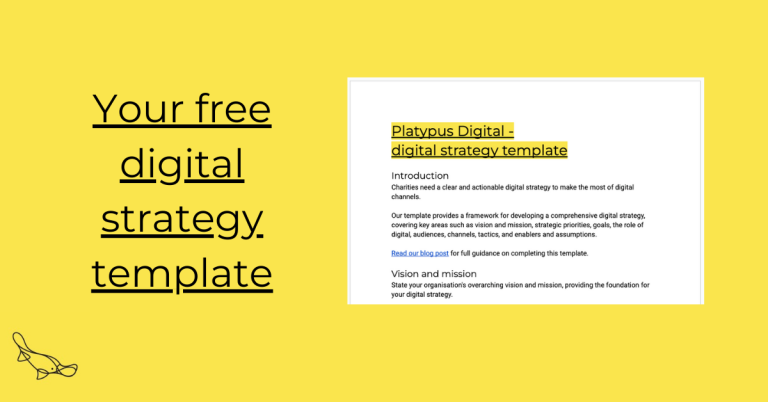Like a lot of teams within charities, digital and digital fundraising teams are often funded by unrestricted funding. That’s funding that was given to the charity to spend it as it sees fit.
Often, that money was raised by truly dedicated fundraisers. Like, incredibly dedicated. They got up at 5am on cold winter mornings to go on arduous marathon training runs, they badgered their friends to donate again and again to your cause, and they gave up a hell of a lot of time. In short, they sacrificed a lot.
So before you spend that extremely hard earned money on digital, you have to ask yourself one very important question.
“Why am I investing this money?”
It’s a question that frequently gets overlooked in all the excitement about the latest shiny thing, from new social media platform, agile technique, VR device and all the other toys in the digital toy box.
But it’s a question that can be answered. Here are six answers to the slightly more specific question “Why should my charity invest in digital marketing?”
1. Digital creates efficient, scaleable reach
Your charity needs to get its life-saving message out to thousands of people, all at once, all the time.
That costs money. Lots of money.
We have some well established communication methods available to us in the world of work to get messages out. Things like talking face to face, the post, and good old fashioned telephones.
But phone, post and even conversations at scale are waaaay more expensive per individual contact than online communication.
So if you want to communicate at scale, digital is by far the most cost-effective way to do so.
2. We get all our information online
If you want to know something in 2018, from where to get blue shoes to the symptoms of Parkinson’s, where do you turn?
The answer is Google.
Search for the answer to almost any question on Google, and the answers pop up in milliseconds. What’s more, you have a huge variety of results to assess.
Your donors, fundraisers and supporters have questions too. Questions about how they can help people close to them, how you can help and what you’ll use their hard earned cash for.
If you give them good answers through informative web content, they’re far more likely to give you money when you ask.
3. Donors have high expectations
Your donors probably use Amazon to get toys delivered for their kids the same day, book an Uber with two clicks and as discussed, Google search results in milliseconds.
In fact, 40% of people will abandon a website that takes more than 3 seconds to load.
So it’s clear – your donors are used to completing online tasks quickly, efficiently and in a nice looking online environment.
Their expectations of your online presence are just as high. And if you don’t meet them through simple donation pages, easy to find service information, and short fundraising event sign up forms, they’re far less likely to do what you want them to do.
4. Online donations are increasing
Online donations accounted for around 8.5% of all donations made to charities in 2018.
That’s up from 7.6% in 2017. It’s risen consistently for years as digital adoption grows.
Investment in digital marketing is an investment in the one growth area of fundraising, and therefore in your charity’s future.
5. Digital means efficient teams
Digital isn’t just outside your charity – it’s inside too.
The faster your team delivers high quality work, the more money your charity can raise and the more good it can do in the world.
Digital tools like Google Drive increase collaboration and reduces server costs. Cloud based CRMs like Salesforce track interactions with supporters far more effectively than offline ones.
Investing in digital platforms internally means more money raised for your life saving services.
6. Digital even retains your staff
Fundraising teams in particular often have a high turnover of staff. And recruiting new staff is a crazily expensive business.
Charities with less advanced digital cultures won’t impress staff who are of a generation that don’t remember when broadband and WiFi wasn’t just everywhere. Working from home isn’t a perk to millenials – it’s a requirement. So charities with less mature digital set-ups will pay the price with a higher staff turnover or difficulties recruiting in the first place.
And higher staff turnover means more money spent on recruiters, more time spent on new team member inductions, and getting them up to speed in their jobs. In short, it means higher operating expenses for your charity.
If you want your staff to be part of the organisation’s future, you need to show them that you’re looking in that direction.
Want to find out more reasons why your charity should invest in digital? Sign up for Why Do Digital, our free email course, delivered during your commute.





